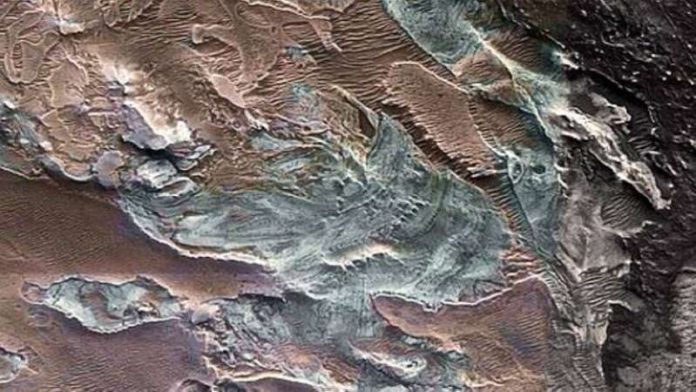An international team of scientists from the SETI Institute, the Mars Institute, and the University of Maryland have discovered remnants of ancient ice near the Martian equator.
Phys.org indicated that the research team presented the results of its work to the 54th Lunar and Planetary Science Conference (LPSC), reports Al-Rai daily.
The researchers discovered remnants of ancient ice in the far eastern part, which is called the “Labyrinth of the Night”, and its coordinates are 7 degrees and 33 minutes south latitude and 93 degrees and 14 minutes west longitude.
According to the researchers, this ice is not the only pale-coloured deposit in the area and is widely known as a light-colored sulfate-salt structure. However, there are other signs of ice in this region, such as cracks and lines, and the length of this ice is estimated at six kilometers, its width is about four kilometers, and its thickness is 1.3-1.7 kilometers.
Near this area, researchers found materials of volcanic origin. They believe that the sulfate salts were formed as a result of a chemical reaction that occurred in volcanic ash, pumice stone, and hot lava particles. With the passage of time and as a result of the influence of erosion and erosion of volcanic rocks, a layer of sulphates appeared in the form of ice.
A combination of factors indicates that these deposits are supposed to be recent according to geological standards, and may date back to the Amazon period, which began 2-3 billion years ago and continues until now. This indicates that water was present on the planet until not so long ago. This is important for understanding whether the planet was habitable in the past and will be habitable in the future.

















